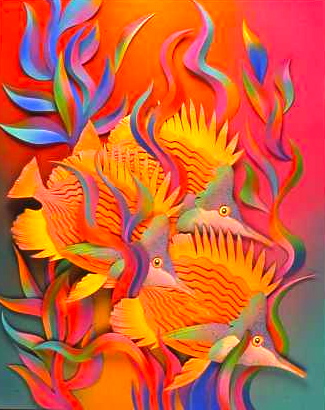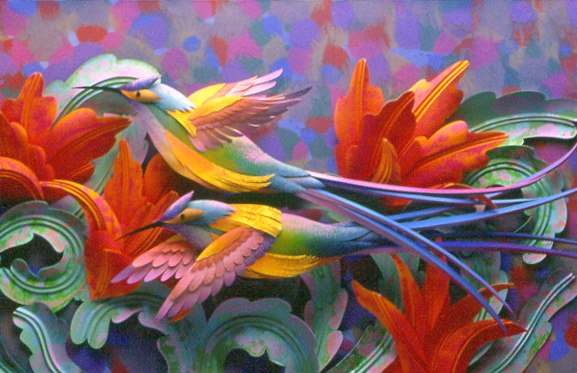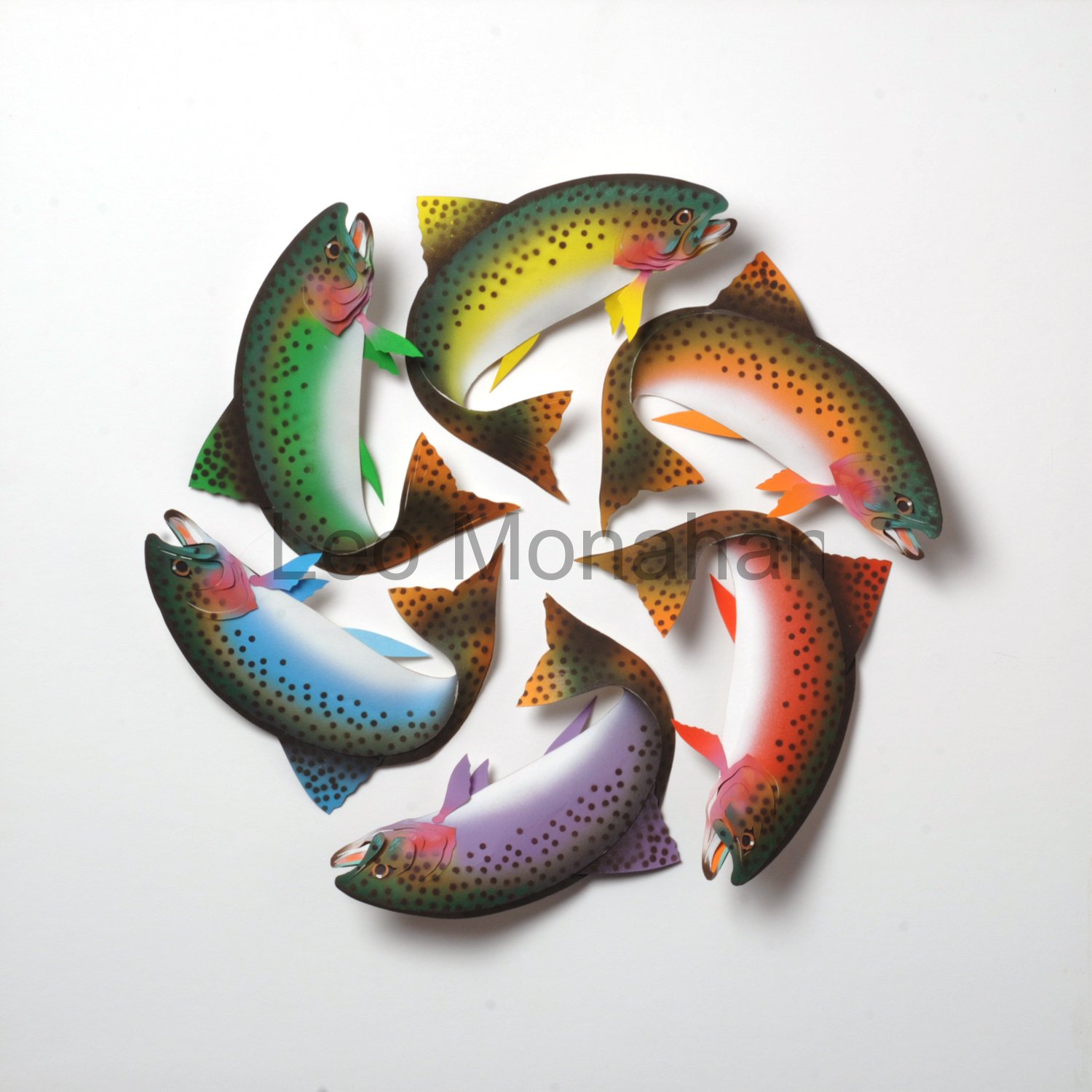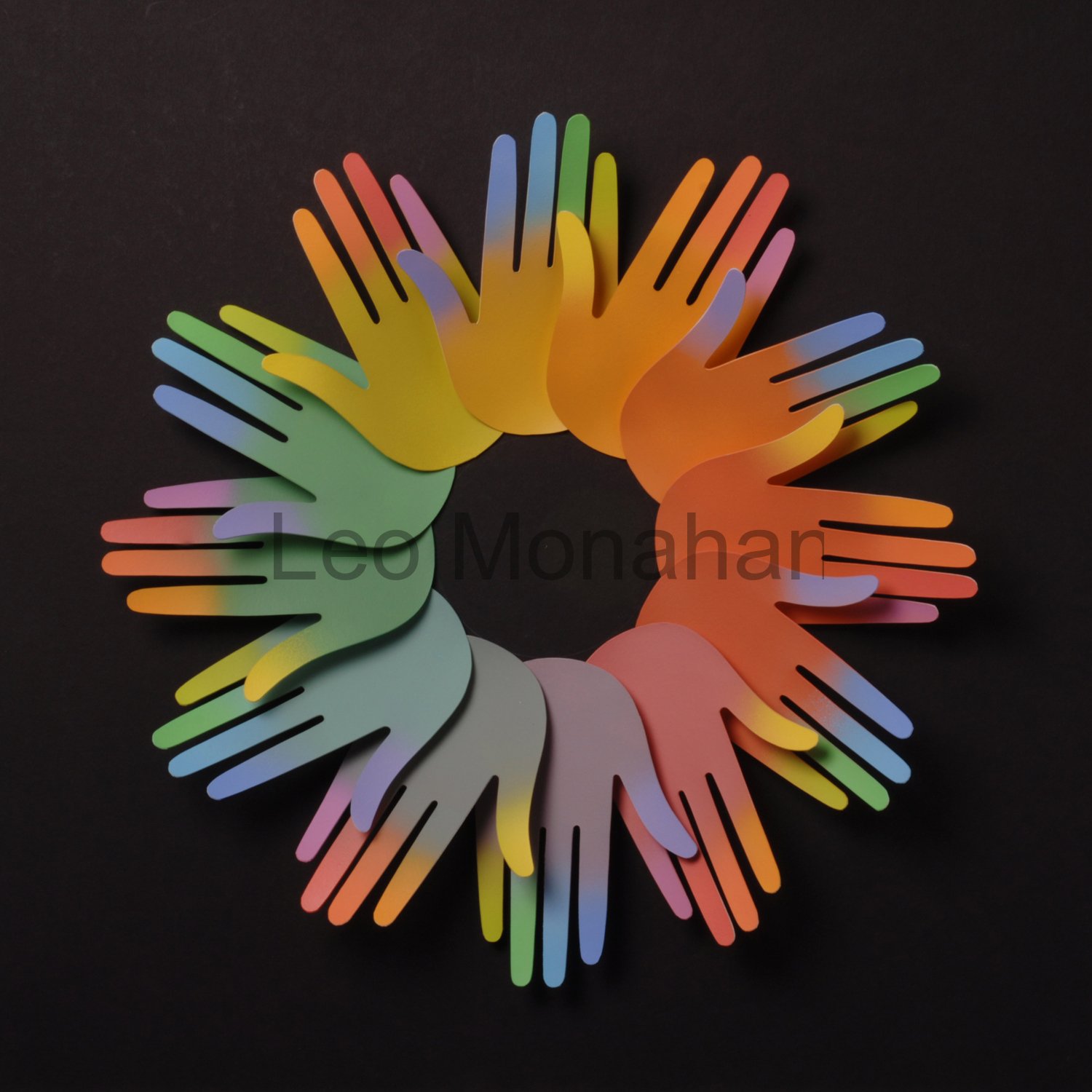Dear Reader,
Where’s the escalator? I’m trying to rise, but it’s not working. Can’t ever go up faster than your bubbles, so they say. Bullcarp!
I’m down 30 or 40 feet in the Pacific just off the coast of Baja, California. I’m here for the color, the bass, garibaldi, lobsters, the waving kelp, and an occasional seal or two and not for the big dark shape, much bigger than me, that just cruised in.
Shark is not my favorite companion, especially in the raw and swimming anywhere near me. I looked for my diving buddy, but Gene Grant was a strong young man and was way ahead of me, churning for the beach. I was a now-and-then diver and when I told people that I was certified, they just nodded and said that I had always been certifiable.
These twelve sharks forming this color wheel, in bright hues and grey bodies, are swimming in a circle like harmless performers at a Sea World show. They’re particularly proud of their 12-tail pattern. Why don’t wet-suited young women ride like water skiers on the backs of sharks, in colorful, big-splash shows? They could call it the “Great White Way.”
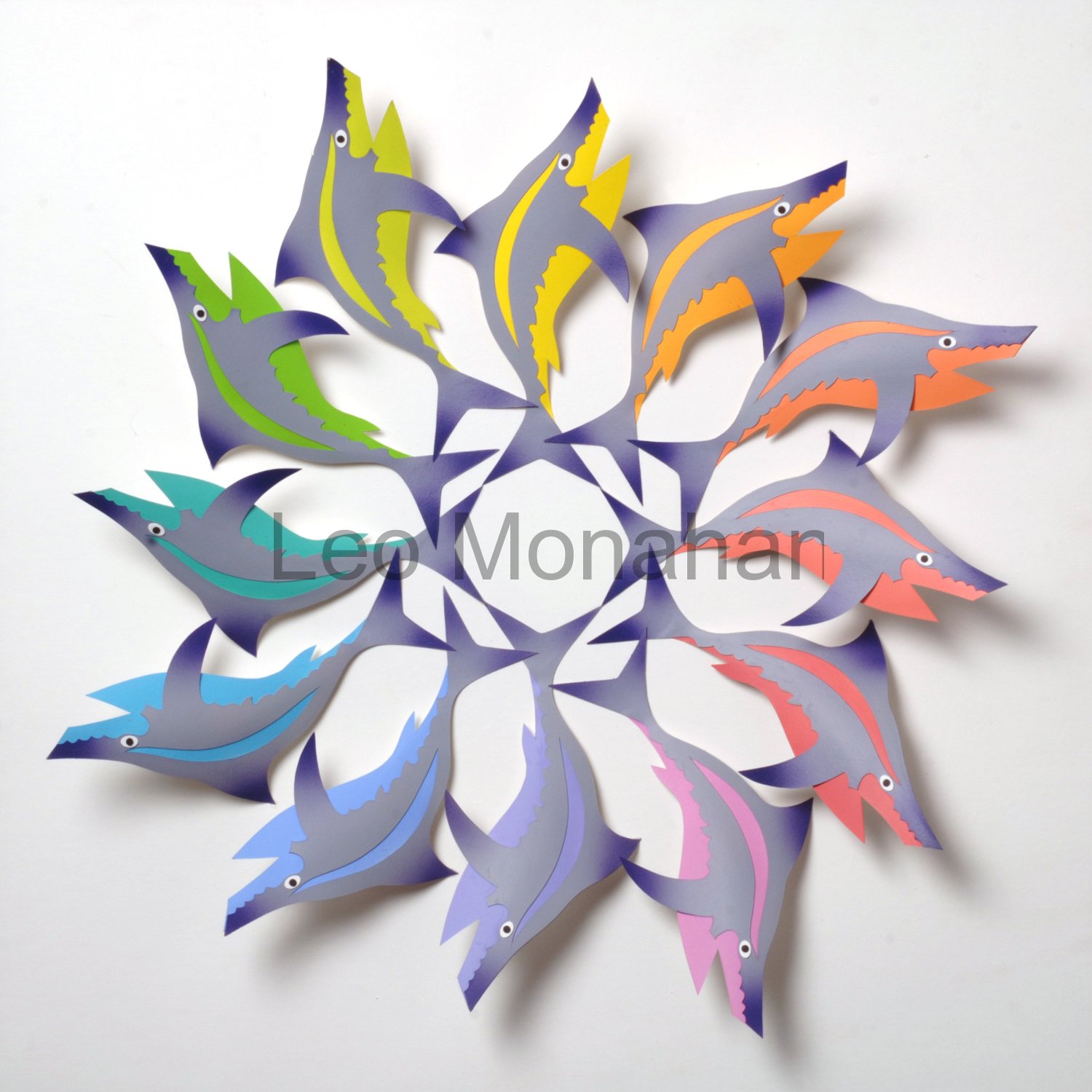
Tra-la-la. Fish, flowers, birds and butterflies, these are a few of my favorite things (you know the tune.) Paper sculpture is at its best when it is complex, and tropical fish, elegant birds, beautiful blooms, and butterfly-bugs are subjects that I have repeated many times with varying success.
I did a series of five large tropical-fish sculptures for a children’s hospital in Minnesota some years ago. I hope you can see that I used a bright, warm selection of color in this example. The client gushed over them, but wished I hadn’t used day-glo paint. Oy! I was cut to the quick. I’ve never owned the glowy stuff.
The effect was the result of simultaneous contrast, where complimentary colors adjacent to each other tend to glow.
These images give me excuses to make up a lot of color combinations and shapes. Anything goes when you are entertaining sick children. As I’ve said before, I’m not much for realism or accuracy. I work for symbolic impressions in my concepts, color and composition, but I workmostly for fun.
Sounds very hoity-toity and I wish that it always worked. I have torn up and thrown away bags of paper sculpture that came close, but no cigar.
Looky the funny pitchur, daddy, they don’t look real at all. Well, little girl, I invented the hummingbirds, flowers, leaves and sky. The image above was done years ago for some client, somewhere, for some purpose, but I’ll be dry-brushed if I can remember who, what, where or why. I’m sure the check was good.
I run all over the color wheel on this one. The flowers are a full-on-no-excuses red. The leaves, baroque in nature, are a warm, neutral green. The birds are combinations of full intensity (pure) color with supporting shades of many tints (addition of white.)
Well, it’s time to wash out my brushes. Thanks for visiting…
I’m going to cut back on my blog to once a month. I’m preparing for a one-man show in October and I can’t do it all and do it well. The ‘tales wag the blog’ when I have to make art to fit the stories.
leo
I’m never content with what I know,
only with what I can find out.
The Shark Color Wheel is available at $1000.
The Grovewood Gallery represents me in the Asheville area.

